Experimental Classes at the Faculty of „Artes Liberales”
The themes selected by the students focus on the characters of beasts and mythological creatures in children’s and young adults’ culture: on their evolution from remote mythological origins to the twenty-first century, on the meanings the young readers associate now with these evolved beings, on what is left, what it means and why it is still relevant. The students explore diverse cultural texts, from collections of myths, canonical novels for children, novels inspired by ancient motifs to cartoons for small and not so small fans, and computer games.
Students and abstracts
 |
Zofia Bartnicka
Faculty of „Artes Liberales”, University of Warsaw E-mail: zofia.bartnicka@student.uw.edu.pl |
The Primal Instincts of Man in an Encounter with Sirens
Analyzing and comparing illustrations from Sara Fanelli’s “Mythological Monsters of Ancient Greece” (2002), John Harris’ “Greece! Rome! Monsters!” (2002) and Padraic Colum’s “The Adventures of Odysseus and the Tale of Troy” (1918), the author attempts to show that human primal instincts are triggered by the Sirens and suggest the way to overcome them. The presentation includes external appearance and characteristic features of the Sirens focussing on their erotic power and ability to arouse sexual desire in the opposite sex. The author shows that, the only way for a man to survive an encounter with the Sirens is not to yield to the enchanting songs; it means that man must confront his human nature and face himself in an inner battle against his own drives, which is usually more difficult than physical combat.
 |
Jan Borek
Faculty of Psychology, University of Warsaw E-mail: j.borek@student.uw.edu.pl |
Some Things Change and Others Do Not
One of the great unknowns is Echidna, mother of monsters. Today we have many movies, books and comics about adventures of mythical heroes. In which they have to face many powerful and dangerous creatures. But, where these came from? The answer could be that there was only one source. Lots of bad creatures came from one place – a mysterious cave in Cilicia, the home of Echidna. Half woman-half snake, married to Typhon she gave birth to Cerberus, Sphinx, Chimera, Nemean Lion and many others.Now, we live in the 21st century but we are still interested in Greek mythology. After twenty-five hundred years, Zeus is still a bearded old man with a thunder and Poseidon, an old man with a trident. Should we really also retain the vision of evil, man-eating, beautiful and deadly half woman-half snake with a bunch of beasts as children?
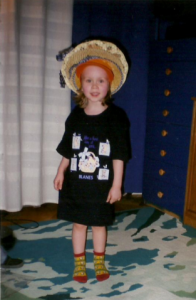 |
Marcelina Luna Deńca
Chinese Studies Department, University of Warsaw E-mail: m.denca@student.uw.edu.pl |
Use of Mythical Creatures as Servants and Executioners
Children’s and young adults’ culture is often inspired by and borrows from Mediterranean Mythology adapting it according to modern needs. I explore the use of mythical creatures as servants and executioners in order to show certain dependencies and to find out the reason why they were being used this particular way in mythology and why this usage continues in modern times. My work is based on three movies – Hercules (1997); Sinbad: Legend of the Seven Seas (2003); The Chronicles of Narnia: The Lion, the Witch and the Wardrobe (2005) which are adaptations of three different literary genres: a myth, a fairy tale, and a fantasy novel.
 |
Aleksandra Gańska
Faculty of Political Science, University of Warsaw E-mail: olaganska@wp.pl |
Image of the Minotaur in Post-1990 Cartoons
Is it Minotaur’s destiny to be evil? Can the creature be good? There is no question that the Minotaur is half-human. It is not particularly important how Minotaur will be portrayed in a movie or a cartoon – as a wild beast or as more human, because his fate is determined by the myth. Through observing several different images in various cartoons, we can formulate a question whether the Minotaur can turn towards good or is he destined to be undoubtedly evil. The evolving image in the cartoons created a space between the opposites of black and white, which could be an opportunity for the Minotaur. We can now explore the possibility whether the Minotaur could choose his own path: become good or remain evil.
 |
Artur Gazda
Faculty of Modern Languages, University of Warsaw E-mail: tharin555@gmail.com |
The Character of Faun in “The Chronicles of Narnia”
Introduction
Faun, satyr, monster, daemon, all occur in Roman mythology. The initial idea of faun was to reflect hedonistic side of man. When we read about fauns, we can easily conclude that such creatures are not suitable characters for kids books.
Faun in Myths
Faun is usually depicted as a perverse mixture of man and goat. In general, it is a rather scary character who tends to mislead wandering travelers, although he is also capable of leading them well, if he wants to. Still, not a creature to be trusted.
Faun in “The Chronicles of Narnia”
In “The Chronicles of Narnia,” the character of Faun seems to break all stereotypes known from classic mythology, art etc. For example, in “The Lion, the Witch and the Wardrobe” the Faun appears an opposite of the “monster” stereotype: he plays the role of a trusted guide (Mr. Tumnus). Then the question which comes to my mind is: what C.S Lewis tried to accomplish by such re-evaluation?
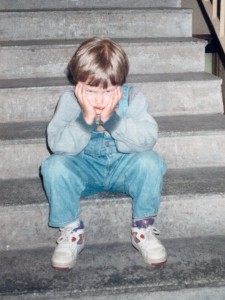 |
Anna Jastrzębska
Institute of Applied Social Sciences, University of Warsaw E-mail: anna.e.jastrzebska@student.uw.edu.pl |
 |
Paulina Pietrak
Institute of Applied Social Sciences, University of Warsaw E-mail: paulina.pietrak@gmail.com |
Post-Modern Werewolves
The purpose of the project is to show changes of social reception of alterity in children’s and young adults culture, considering the post-modern shift in social values. We will try to prove that those changes may be explained by sociological theories (mostly, but not only by Inglehart’s human development theory and Bauman’s post-modernism). Because of educational aspect of children’s culture, the changes are being reinforced on the feedback principle. We will analyse images of werewolves in a book (Harry Potter) and a TV show (Teen Wolf) that in our opinion, bear a hidden resemblance to the ancient myth about Lycaon.
 |
Monika Jasińska
, University of Warsaw E-mail: monikajasinska95@gmail.coml |
Charon, What is Left?
Focusing on Charon is a diffucult task. In my attempt of describing this character I will analyse his appereance and behaviour. Charon, What Is Left? is a poster clarifying the change that he has made through years. Which factors have remainded and which have not?
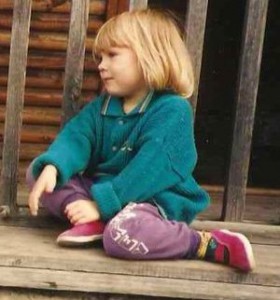 |
Paulina Kłóś
Faculty of „Artes Liberales”, University of Warsaw (graduate) E-mail: klospaulina.k@gmail.com |
Celestial Friend – Representations of Pegasus in Selected Examples of Contemporary Art for Children
Poster Celestial Friend – Representations of Pegasus in Selected Examples of Contemporary Art for Children examines references to the mythical Pegasus in modern culture in a variety of films, books, plays and toys. The research aims to show educational aspects of these representations and document the thesis that Pegasus is depicted in the works for the youngest recipients as a guide. I also intend to prove that now the mythical Pegasus is not a spirit of a distant era but a friend for children around the world. The research will include works where Pegasus is shown as a creature known from mythology and others in which the mythological Pegasus becomes an inspiration for the characters. Pegasus as a guide will be analyzed on the following examples: classic Disney movies – Hercules and Fantasia, cartoon: Barbie and the Magic of Pegasus, books: Pegasus the Flame (Kate O’Hearn).
 |
Joanna Kozioł
Institute of Classical Philology, University of Warsaw E-mail: joannakozio8@gmail.com |
The Two Faces of Three-Headed Cerberus
In my presentation I analyse the image of Cerberus in children’s literature. Is Cerberus a strange monster? Can he ever be a nice dog? Although Cerberus known from mythology is a dangerous guardian of hell, the image known from literature may move between the opposites – good or bad. Some authors are more faithful to the mythical image, others not. Why is that? To describe this phenomenon I discuss two early mythologies for children, the first written by Nathaniel Hawthorne and the second written by Charles Kingsley. I add to them two authors of our times and two authors from Poland in order to show how the image of Cerberus changes through the ages.
 |
Anna Mik
Faculty of Polish Studies, University of Warsaw E-mail: a.mik@student.uw.edu.pl |
Forbidden Forest Full of Myths and the Consequences of Naming
The Harry Potter universe is constructed of symbols and images that have their roots in many different cultural traditions – among many others in Greek and Roman mythology. J.K. Rowling, as a classicist, has exploited these traditions in a consequent way to create a specific, yet still vividly mythological representation of the magical creatures. These creatures primarily are: Centaurs, Merpeople (Sirens), a Phoenix, and a Cerberus. I analyze these figures in the context of animal studies, focusing on the matter of naming them either „beast”, „pet” or „being”. I try to show how this authoritative procedure influences the perception of magical creatures in the social and political life of the wizarding world by placing them on an artificial hierarchical scale. The research material consists of the Harry Potter series as well as Rowling’s book, Fantastic Beasts and Where to Find Them.
| Agnieszka Robakiewicz
Faculty of „Artes Liberales”, University of Warsaw E-mail: a.robakiewicz@student.uw.edu.pl |
Who Is Still Afraid of Scylla?
Scylla – one of the two mythological monsters living in the Strait of Messina. A horrible creature whom Odysseus faced and who is mainly known from Homer’s „Odyssey”. In ancient times there was no definitive description of Scylla, it varied depending on the author and the time in which each description was created. The same applies to her origin, which also remains uncertain. In the Homeric epos she is a terrible creature with twelve legs and six mouths that bark and whine, the poet says nothing about her origins; later classical writers, like Ovid, claim that she was a nymph turned into a monster. In the “Metamorphoses” he describes her transformation into a creature with the upper torso of a woman and fore-parts of six dogs growing out of her lower body. Collections of myths for children in the twentieth and twenty-first century show many different faces of Scylla, progressively departing further and further from the classical representations. Because of this evolution, Scylla could serve as a good example of changes detectable in the modern perception of Greek and Roman mythology. This is the reason why I ąm going to compare the descriptions of Scylla in the “Odyssey” and “Methamorphoses” with a few modern collections of myths for children. I want show how the vision and function of Scylla changed and that this change is not now without reason.
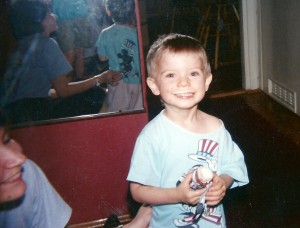 |
Krzysztof Rybak
Faculty of „Artes Liberales”, University of Warsaw E-mail: krzysztof.maciej.rybak@student.uw.edu.pl |
Childhood in the Labyrinth of the Ghetto. Nazis as Minotaurs in Children’s Literature about Shoah
I would like to begin by presenting the myth about the Minotaur and a Polish novel, Jutka’s Insomnia (by D. Combrzyńska-Nogala), which will be the key to interpret two other Polish texts about the Shoah written for children (M. Szczygielski’s The Ark of Time, and R. Piątkowska’s All My Mothers). In these texts we find all elements from the classical myth: ghetto as a labyrinth, Nazis as minotaurs, metaphorical (grandfather telling the myths) and literal (the non-fictional character of Irena Sendlerowa) Ariadnes, and the ball of thread. All the mythological elements are there but one – Theseus, the hero who slays the Minotaur. I intend not only to investigate how the classical myth was transformed but also to show the relation of fear between the child lost in the labyrinth of childhood and the adult, and to emphasize how mythological stories influence the child’s perception.
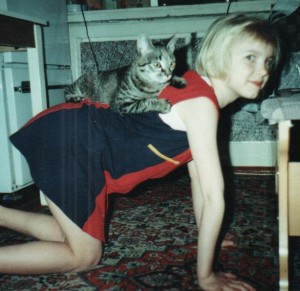 |
Inga Shemaeva
Faculty of „Artes Liberales”, University of Warsaw E-mail: i.shemaeva@student.uw.edu.pl |
Sphinx As A Marker Of Initiation In Fantasy Worlds
Sphinx is one of the most mysterious and inconceivable creatures in the world’s bestiary. Since Oedipus first met Sphinx and received its riddle, it still remains an enigma for us. After this meeting Oedipus from a vagabond shepherd became a king, having completed an «intellectual» initiation, rare in mythology. For thousands of years we try to understand, what was the Sphinx, why it proposed this riddle and what this creature symbolized? Within the presentation we will try to answer these questions by following the appearance of Sphinx in well-known novels for children by Michael Ende, Neil Gaiman, J. K. Rowling and Rick Riordan. We will investigate and compare the differences in the Sphinx’s looks, function and behaviour. We will see that Sphinx is inseparably associated with initiation trials and parallel magical worlds – where the real rites of initiation, missing in modern world, might take place to show the adolescent what one is worth and where one belongs.
 |
Karolina Zofia Tłoczkowska
Chinese Studies Department, University of Warsaw E-mail: k.tloczkowska@student.uw.edu.pl |
Manga’s way of transferring mythological creatures from ancient Greek tradition
My research, as well as my poster, concentrates on the way that concepts of beasts from Mediterranean mythology were transferred to far eastern popular culture. The Japanese culture is a good recipient of many cultures, especially on popular level – it incorporated a number of concepts from China, Europe and America. That includes also ideas from fairytales, legends and myths. The Japanese adapt foreign concepts creatively, often only partially, focusing on the transfer of certain characteristic traits. It is clearly noticeable in the Japanese Manga. I would like to point out an example of one beast that successfully travelled between cultures: Cerberus.
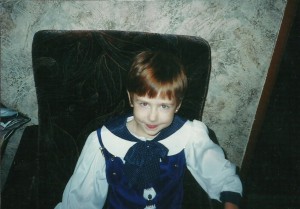 |
Natalia Wójcicka
Institute of Social Prevention and Resocialisation E-mail: n.wojcicka2@student.uw.edu.pl |
Antiquity and Player’s Imagination
In a fantasy role-play table-top game, players develop their imagination by impersonating different characters and encountering unknown difficulties. However, every game must have its restrictions. Game Warhammer gives players an opportunity to discover extraordinary creatures that don’t exist in the normal world. Rules of the game define the nature of every single monster. Old World Bestiary – a textbook written by T.S. Luikat – specifies particular creatures that the game master may enter into the storyline. These creatures frequently have their genesis in the Greek mythology. On the basis of this textbook, we can learn what kind of enemies or allies may the player encounter, by impersonating his character. So here emerges a question: how did the authors of the Bestiary adapt the mythical creatures to the game’s world so that players could activate their imagination and empathize with the game’s atmosphere.
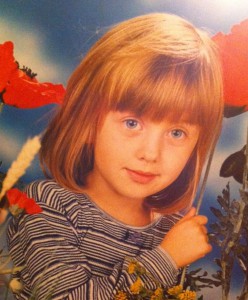 |
Hanna Zarzycka
Faculty of „Artes Liberales”, University of Warsaw E-mail: hanna.zarzycka@student.uw.edu.pl |
Medusa in Children’s Animation
My poster is entitled Medusa in Children’s Animation. My working hypothesis advocates the need for clarifying the role of Medusa as a carrier of specific values, that in time become increasingly positives. My methodology will rely on an analysis these cultural texts. I expect it will lead me to the conclusion that adults strive to create for children an improved image of a monster. Perhaps this is due to adults who are afraid of ambiguities in stories aimed at children. Monster (form) with a good character (content) is an oxymoron, a mixed convention, which is characteristic for postmodern children’s culture in the twenty-first century. Medusa’s portraits will occupy part of the poster, along with short descriptions of the cartoons.
Guest Poster from Germany
 |
Michael Stierstorfer
Faculty of Languages, Literature and Cultural Studies, University of Regensburg E-mail: Michael.Stierstorfer@ur.de |
Familiarisierungsprozesse von mythologischen Fabelwesen in der postmodernen Phantastik am Beispiel der Percy-Jackson-Reihe (Romane un Filme)
In this interdisciplinary study, to which this poster refers to, 100 postmodern books and films belonging to the genres of fantasy and fairy tale are examined. All of the works are based on Greco-Roman mythology and part of all-age literature. This sort of literature has been prospering since the beginning of the millennium because, at that time, the Percy Jackson series by the worldwide best-selling author Rick Riordan appeared. The thesis is advanced that Greco-Roman mythology serves as a store of prototypical individual elements and motifs for postmodern fantasy and fairy tales. That is why not only transformations of whole myths, for example the well-known myth of the sirens, are examined, but also mythical figures like Zeus, settings like Mount Olympus, objects like Perseus’ shield and patchwork families like the ones of Perseus or Hercules. The corpus consists of fantasy novels and films which were published between 1997 (Disney’s Hercules as terminus a quo) and 2015 (Riordan’s The Heroes of Olympus. The Blood of Olympus as terminus ad quem) and which extend Greco-Roman mythology to a supernatural context within which a hero sets out on a journey; according to Campbell, this depicts the process of the protagonists attaining adulthood. Finally, applying Rosch’s theory of prototypes, the study revealed that the ancient mythical elements and motifs are often hybridized, familiarized, modernized and given a Christian tenor. Also, the study focuses on the neo-conservative values and norms which are conveyed in the adaptions. Because of the tension between the (post-)modern world and archaic mythology, contemporary Western values and norms are greatly undermined. In addition to the reestablishment of tit-for-that payback, female figures are presented either as negatively connoted perpetrators, for example the fury or Medusa, or positively connoted victims, for example Persephone or Helen of Troy. Furthermore, a set of middle-class and conservative values is forced on the value system of the antiquity during the transposition of the ancient myths to contemporary children’s media. In this context, free sexuality is demonized and middle-class family relations are showcased. Therefore, there is no space for pluralistic lifestyles. Eventually, what remains of Greco-Roman mythology is but an empty shell. Beside these literary approaches, a didactic analysis shows that postmodern adaptions of Greco-Roman mythology may be employed as preliminary information and motivation for adolescents in order to deal with the advanced civilization and literature of the ancient Greeks and Romans, especially taught in the subjects German and Latin. The mythological elements, for example hybrid beasts, and motifs, for example the myth of the titans, of those works pick up the tradition of the famous Roman author Ovid, who is called ‚post-modernist‘ by Harzer and whose poem Metamorphoses is important for Western culture.